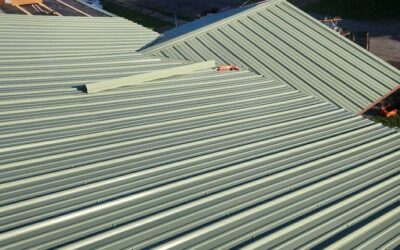A green roof, also known as a living roof, is a rooftop covered with vegetation and a growing medium, installed over a waterproofing system. Green roofs offer environmental, aesthetic, and economic benefits by improving air quality, reducing urban heat, and enhancing energy efficiency. (Turf Magazine)
Types of Green Roofs
Green roofs are generally categorized into three types:
- Extensive Green Roofs: These are lightweight systems with shallow soil depths, typically supporting drought-tolerant plants. They require minimal maintenance and are not designed for regular foot traffic.
- Semi-Intensive Green Roofs: These have moderate soil depths and can support a wider variety of plants, including grasses and shrubs. They require more maintenance than extensive roofs and can accommodate occasional foot traffic.(Neumann Monson)
- Intensive Green Roofs: These are deeper systems that can support a diverse range of plant life, including small trees and gardens. They require substantial maintenance and are designed for regular human use. (Neumann Monson)
Benefits of Green Roofs
Green roofs provide numerous advantages:
- Stormwater Management: They absorb rainwater, reducing runoff and mitigating the risk of flooding. (Sempergreen)
- Air Quality Improvement: Plants on green roofs filter pollutants and produce oxygen, contributing to healthier air. (freemanroofing.com)
- Temperature Regulation: Green roofs insulate buildings, reducing heating and cooling costs, and help mitigate the urban heat island effect. (US EPA)
- Extended Roof Lifespan: The layers of a green roof protect the underlying structure from UV rays and temperature fluctuations, extending its lifespan. (freemanroofing.com)
- Biodiversity Enhancement: They provide habitats for various species, promoting urban biodiversity.
Installation Process
Installing a green roof involves several key steps:
- Structural Assessment: Ensure the building can support the additional weight of a green roof. (U.S. General Services Administration)
- Waterproofing: Install a waterproof membrane to protect the building from moisture. (Treehugger)
- Root Barrier: Add a layer to prevent plant roots from penetrating the waterproof membrane. (Treehugger)
- Drainage Layer: Incorporate a drainage system to manage excess water.
- Growing Medium: Apply a specially formulated soil mix suitable for the selected vegetation.
- Vegetation Planting: Plant appropriate vegetation based on the roof type and climate conditions.
Maintenance Considerations
Regular maintenance is essential for the longevity of a green roof. Tasks include:
- Weeding: Removing invasive species that may outcompete desired plants.(Architectural Digest)
- Irrigation: Watering during dry periods to ensure plant health.
- Fertilization: Applying nutrients as needed to support plant growth.
- Inspection: Regularly checking for drainage issues, membrane integrity, and plant health.
Conclusion
Green roofs are a sustainable and beneficial addition to urban environments, offering ecological, economic, and aesthetic advantages. Proper planning, installation, and maintenance are crucial to maximize these benefits and ensure the longevity of the green roof system.
For a visual guide on green roof installation, you may find this video helpful:
Sempergreen Green Roof Installation
 (440) 307-2060
(440) 307-2060

